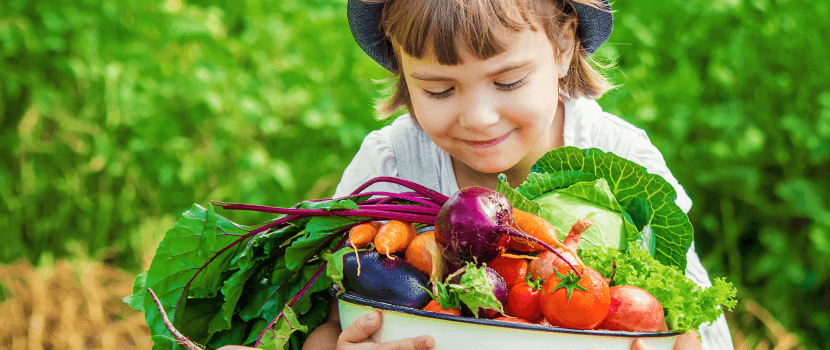Nature’s Anecdote for the Change of Season
Nature’s Anecdote for the Change of Season
Spring has sprung, the sun is coming to play, flowers are blooming and people?
Well, some are allergic to hay. Hay fever, also known as allergic rhinitis forms part of seasonal allergies. But before we deny ourselves the pleasure of a sniff at those pretty blossoms, let’s get to the roots of this pollen saga.
During the seasonal allergy period where more pollen is being released, the body’s immune system reacts to the pollen as an invader or pathogen. As a defence mechanism, our body produces histamine- an inflammatory chemical mediator released by the mast cells during allergic reactions which attach to the cells in our body, thus causing irritation and triggering a reaction of various symptoms- like sneezing, headache, nasal irritation, itchy or dry eyes, runny nose, post-nasal drip and skin allergic reactions. Histamine intolerance is a condition that results in high histamine levels. It’s caused by a deficiency of an enzyme, diamine oxidase (DAO), that breaks histamine down. Anything that increases histamine can contribute to this condition.
An antihistamine serves to reduce or eliminate the effects brought on by histamine. The issue with the over-the-counter antihistamines options — aside from their obvious side effects of drowsiness, cloudy thinking, dry mouth and, for some, accelerated heart rate — is that they don’t actually treat the root cause of why it’s happening, they just mask the symptoms for several hours. So, if you’re looking for a more extended or long-term solution, which happens to also be way more accessible is through food (or ought to be)! Yup, God-given, unprocessed, all-natural anti-histamines can be found in Food. It’s a good idea to naturally supplement with a low histamine food, eliminate high histamine foods and also eat foods that calm your body’s inflammation and assists in detoxification.
Before we dive into the incredible array of options, note the immense importance of always diversifying your meals and food intake to truly optimize gained benefits. Ross and Kasum[1] who have published “Bioavailability and Metabolism of Flavonoids” comment that “the sum of parts (total fruit and vegetable intake) is more important in providing health benefits than only 1 plant constituent.”
[1] Ross JA, Kasum CM. Dietary flavonoids: bioavailability, metabolic effects, and safety. Annu Rev Nutr. 2002;22:19–34 [PubMed] [Google Scholar
Let’s start with some natural antihistamines like flavonoids. Flavonoids, such as quercetin or catechin, are a group of plant pigments predominantly responsible for the colours of many fruits, vegetables, and flowers. Quercetin is a powerful natural anti-histamine found to help stabilize mast cells to prevent both the manufacture and release of histamine, as well as other allergic, viral and inflammatory compounds, it even stimulates the immune system[1]. Good sources of quercetin are citrus fruits, onions, garlic, apples, parsley, green tea, tomatoes, broccoli, lettuce, legumes, berries, and wine.
[1] Quercetin and Its Anti-Allergic Immune Response
Jiri Mlcek,1,* Tunde Jurikova,2 Sona Skrovankova,1 and Jiri Sochor3
Here is a more extensive table with some of the best sources of flavonoids:
| Flavanols | Flavan-3-ols* | Flavones | Flavanones | Anthocyanidins |
| onions | apples | parsley | oranges | blueberries |
| apples | bananas | bell peppers | grapefruit | bananas |
| romaine lettuce | blueberries | celery | lemons | strawberries |
| tomatoes | peaches | apples | tomatoes | cherries |
| garbanzo beans | pears | oranges | pears | |
| almonds | strawberries | watermelon | cabbage | |
| turnip greens | dark chocolate | chilli peppers | cranberries | |
| sweet potatoes | Green tea | cantaloupe | plums | |
| quinoa | cherries | lettuce | raspberries | |
| curly kale | beans | capsicum | garbanzo beans |
Vitamin C is next, known for being an extremely dynamic vitamin, it not only serves a multitude of functions in the body like being a potent antioxidant, anti-inflammatory, its role in synthesis of collagen for skin, blood vessels and bones, besides all of that, (yes really) it is a powerful natural antihistamine! Vitamin C loses some of its efficacy once exposed to air, after being boiled, processed or even stored for too long, luckily, we’ve been blessed with oodles of options to take in this ultimate and essential nutrient for our human life, vitamin C.
Here are just some of the many options of delicious vitamin C-packed foods:
| Guavas | Black currents | Red bell peppers | kale | Parsley |
| Mango | Blueberries | Green sweet peppers | Broccoli | Cayenne pepper |
| Papayas | Strawberries | Sweet potatoes | Brussel sprouts | Basil |
| Pineapple | Cranberry | Black eyes peas | Spinach | Coriander |
| Oranges | Kiwi | Yellow squash | Watercress | saffron |
| lemon | peaches | turnips | lettuce | bay leaf |
| cantaloupe | raspberries | Sweet peas | cauliflower | thyme |
| banana | tomatoes | Bergamot | ||
| grapefruit | watermelon | |||
| mandarins |

The last food group we will focus on that supplies benefit against those interfering sinus symptoms, are the essential Omega-3 fatty acids. These fatty acids have profound anti-inflammatory properties which have shown to be inflammation-resolving too, they sort it out functionally.[1] This is crucial since allergic rhinitis is characterized by chronic inflammation of the nasal mucosa,[2] so by reducing inflammation and boosting the overall efficiency of the body’s natural functions, we will be able to significantly assist in the reduction of histamine production and overall sensitivity. There is an array of natural omega-3 fatty acids found in fatty cold-water fish, like salmon, trout, tuna, pilchards and even eggs. For an even easier, more accessible way, especially to supplement with a healthy dose of these essential fats is through any of the B-well Canola products, below is a list of the products that contain omega-3 and some other plant-based options too:
[1] Omega-3 Fatty Acids and Inflammatory Processes. Philip C. Calder, Nutrients. 2010 Mar; 2(3): 355–374.
Published online 2010 Mar 18. doi: 10.3390/nu2030355
[2] Anti-inflammatory H1 Antihistamines Allergic Rhinitis, Stefan Cristian Vesa, Iuliu Hatieganu University of Medicine and Pharmacy.
- B-well Pure Canola oil
- B-well Canola & Olive Blend Oil
- B-well Mayonnaise (we love the Thick & Creamy)
- Walnuts
- Hemp seeds
- Chia seeds
- Flaxseed
The best way to tap in to such a vast list of foods is to start slowly and to integrate these in to your daily meals, snacks and recipes all year round and before the hay-fever season hits, to increase the quantity and assortment of colourful foods that you consume. Remember diversity is key when it comes to healthy, balanced eating, and always to drink plenty of water to hydrate the body while it works so hard and give it the needed liquid to perform it’s tasks to the best ability. Happy Spring, here’s to more blossoms, less ah-chu!

